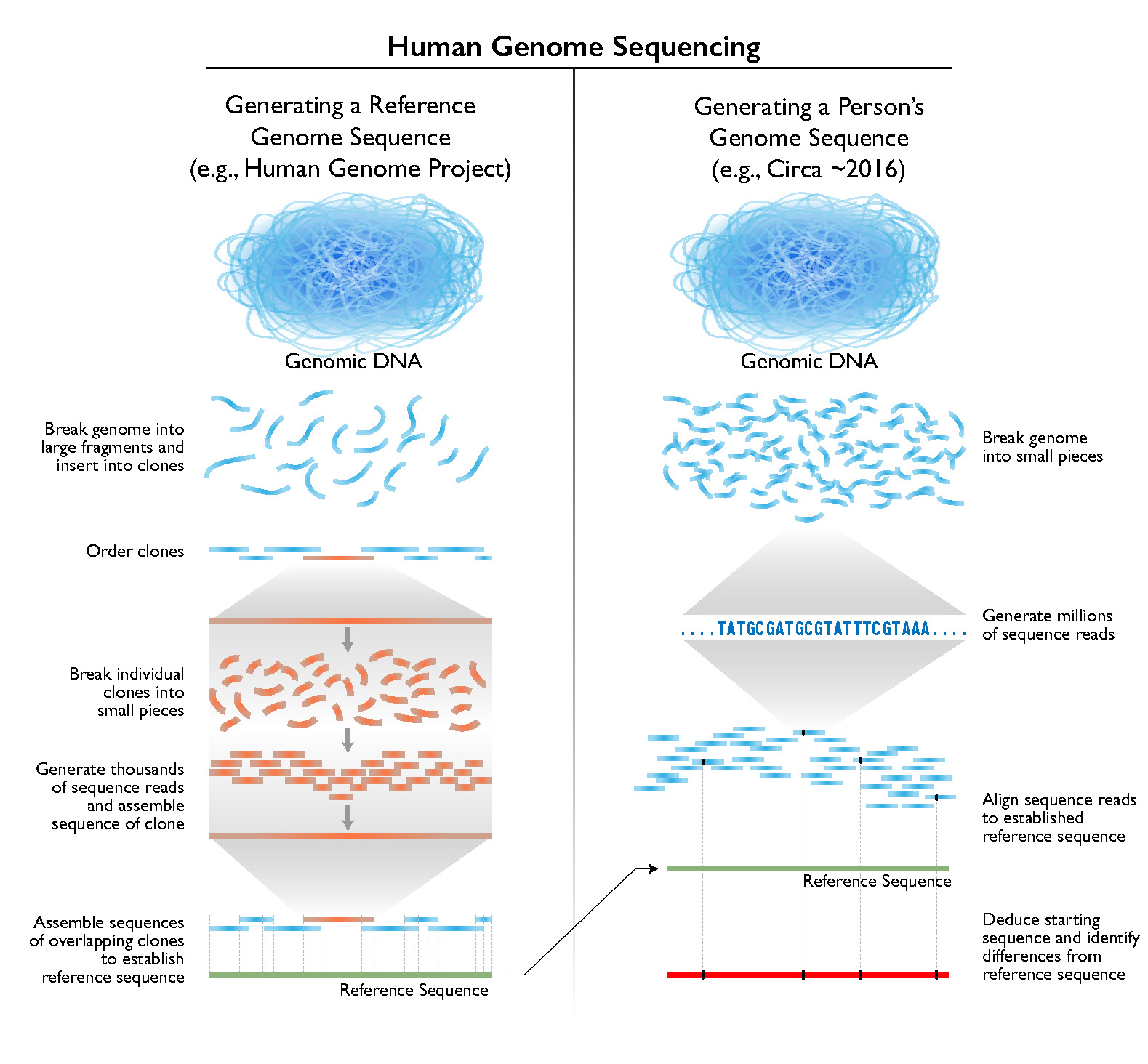CRISPR's Potential: Inserting Functional Genes Into The Human Genome

Table of Contents
CRISPR-Cas9: The Precision Tool for Gene Editing
CRISPR-Cas9 is a gene-editing technology derived from a natural defense mechanism found in bacteria. The system utilizes a guide RNA (gRNA) molecule, a short RNA sequence designed to be complementary to a specific target DNA sequence in the genome, and the Cas9 enzyme, a molecular scissor that cuts the DNA at the targeted location. This targeted gene insertion allows for precise gene modification, offering significant advantages over older gene editing techniques.
Advantages of CRISPR-Cas9:
- High precision: CRISPR-Cas9 allows for highly specific targeting of DNA sequences, minimizing off-target effects compared to older methods.
- Ease of use: The CRISPR-Cas9 system is relatively simple to design and implement, making it accessible to a broader range of researchers.
- Cost-effectiveness: Compared to other gene editing technologies, CRISPR-Cas9 is significantly more cost-effective.
- Versatility: The system can be adapted for various gene editing applications, including gene knockouts, knock-ins, and precise base editing.
Types of Gene Insertion Methods using CRISPR
Several methods exist for inserting functional genes using CRISPR, each with its own advantages and disadvantages:
- Homology-directed repair (HDR): This method uses a donor DNA template containing the desired functional gene alongside the target sequence. After Cas9 cuts the DNA, the cell's natural repair mechanisms use the donor template to insert the functional gene. HDR offers high precision but can be less efficient than NHEJ.
- Non-homologous end joining (NHEJ): This method relies on the cell's error-prone repair mechanisms to join the broken DNA ends. While less precise than HDR (it often introduces small insertions or deletions), NHEJ is more efficient and can be useful for gene knockouts.
- Prime editing: A newer, more precise method than HDR, prime editing uses a modified Cas9 enzyme to directly write new genetic material into the DNA, offering greater flexibility and accuracy.
Applications of Functional Gene Insertion using CRISPR
The potential applications of inserting functional genes using CRISPR are vast and transformative.
Treating Genetic Disorders
Numerous genetic disorders could benefit from functional gene insertion using CRISPR. Examples include:
- Cystic fibrosis: CRISPR could be used to correct the faulty CFTR gene, restoring normal lung function. Clinical trials are underway exploring this approach.
- Sickle cell anemia: CRISPR-based therapies aim to correct the mutation in the beta-globin gene, producing healthy hemoglobin. Successful clinical trials have demonstrated the potential of this approach.
- Huntington's disease: Researchers are investigating the possibility of using CRISPR to silence the mutant huntingtin gene, reducing the production of the toxic protein responsible for the disease.
Enhancing Gene Function
Beyond disease correction, CRISPR holds the potential to enhance gene function. This could include:
- Boosting immune response: CRISPR could be used to modify immune cells, enhancing their ability to target and destroy cancer cells or pathogens.
- Improving metabolic processes: Modifying genes involved in metabolism could lead to improved energy production or enhanced nutrient utilization.
- Agricultural applications: CRISPR could be used to develop crops with enhanced nutritional value, disease resistance, or yield.
- Biomanufacturing: CRISPR can be used to engineer cells for more efficient production of therapeutic proteins or other valuable molecules.
Challenges and Ethical Considerations
While CRISPR offers immense potential, significant challenges and ethical considerations need to be addressed.
Off-target effects
One major concern is the potential for off-target effects – unintended edits to the genome. Minimizing off-target edits is crucial for ensuring the safety of CRISPR-based therapies. Strategies for improving specificity include:
- Improved guide RNA design: Developing more efficient gRNAs that target only the intended DNA sequence.
- High-fidelity Cas9 variants: Utilizing modified Cas9 enzymes with enhanced specificity.
- Multiplexing: Using multiple gRNAs to target the same gene simultaneously to enhance correction efficiency.
Ethical Concerns
The ethical implications of CRISPR, particularly germline editing (editing the genes of reproductive cells, which can be passed on to future generations), are profound. These considerations include:
- Unintended long-term consequences: The potential for unknown and potentially harmful effects on future generations.
- Access and equity: Ensuring equitable access to CRISPR-based therapies, preventing exacerbation of existing health disparities.
- Responsible innovation: The need for careful regulation and oversight to prevent misuse of the technology.
The Future of CRISPR and Functional Gene Insertion
CRISPR technology holds immense potential for inserting functional genes into the human genome, offering innovative treatments for genetic diseases and a wide array of other therapeutic applications. However, realizing this potential requires careful consideration of the associated challenges and ethical implications. Further research and development, coupled with rigorous safety testing and ethical guidelines, are crucial to unlocking the full therapeutic potential of CRISPR while ensuring responsible innovation. Continued investment in research focused on improving CRISPR specificity, reducing off-target effects, and developing robust delivery systems is essential. Explore the latest advancements in inserting functional genes into the human genome with continued research and development to ensure a future where genetic diseases are effectively treated and human health is significantly improved.

Featured Posts
-
 Ai Driven Podcast Creation Analyzing And Transforming Repetitive Scatological Text
May 30, 2025
Ai Driven Podcast Creation Analyzing And Transforming Repetitive Scatological Text
May 30, 2025 -
 One Missing After Glacier Induced Mudslide In Swiss Village
May 30, 2025
One Missing After Glacier Induced Mudslide In Swiss Village
May 30, 2025 -
 Bells Ai Expansion Six New Data Centres In British Columbia
May 30, 2025
Bells Ai Expansion Six New Data Centres In British Columbia
May 30, 2025 -
 Como Obtener Tu Reembolso Por La Cancelacion Del Festival Axe Ceremonia 2025 En Ticketmaster
May 30, 2025
Como Obtener Tu Reembolso Por La Cancelacion Del Festival Axe Ceremonia 2025 En Ticketmaster
May 30, 2025 -
 Is Canada On The Brink Of Losing Its Measles Elimination Status A Fall Forecast
May 30, 2025
Is Canada On The Brink Of Losing Its Measles Elimination Status A Fall Forecast
May 30, 2025
Latest Posts
-
 Munichs Bmw Open 2025 Zverev Battles Griekspoor In Quarter Finals
May 31, 2025
Munichs Bmw Open 2025 Zverev Battles Griekspoor In Quarter Finals
May 31, 2025 -
 May Day Rally In Kingston Images Show Strength And Solidarity Daily Freeman
May 31, 2025
May Day Rally In Kingston Images Show Strength And Solidarity Daily Freeman
May 31, 2025 -
 Bmw Open 2025 Zverev Griekspoor Quarter Final Showdown In Munich
May 31, 2025
Bmw Open 2025 Zverev Griekspoor Quarter Final Showdown In Munich
May 31, 2025 -
 Indian Wells Surprise Zverevs First Match Exit And His Honest Assessment
May 31, 2025
Indian Wells Surprise Zverevs First Match Exit And His Honest Assessment
May 31, 2025 -
 Trump Administration Loses Key Advisor Elon Musks Resignation Explained
May 31, 2025
Trump Administration Loses Key Advisor Elon Musks Resignation Explained
May 31, 2025
